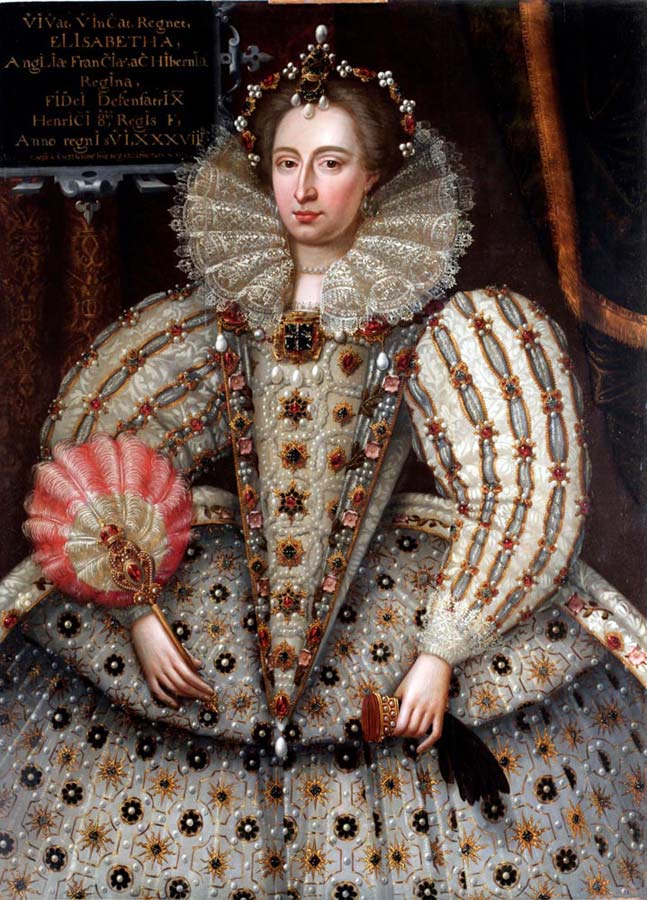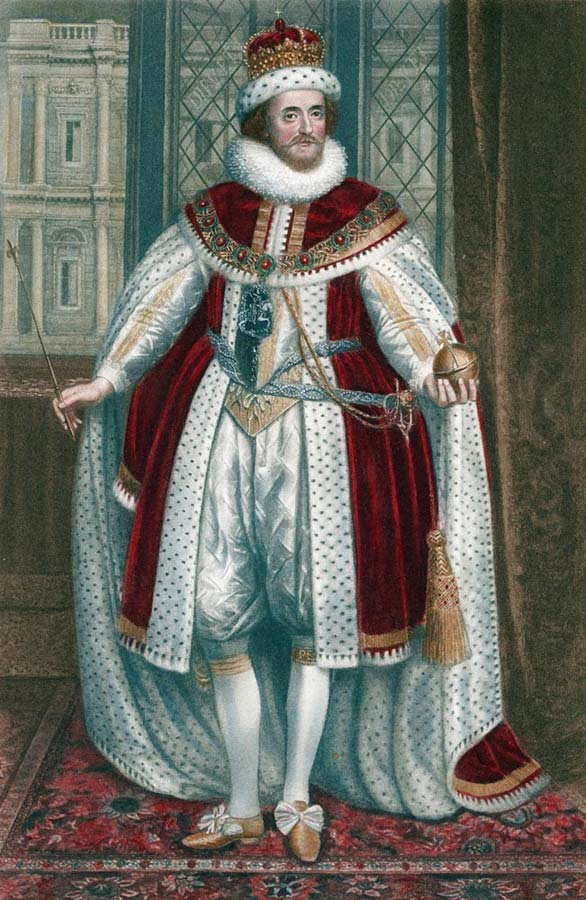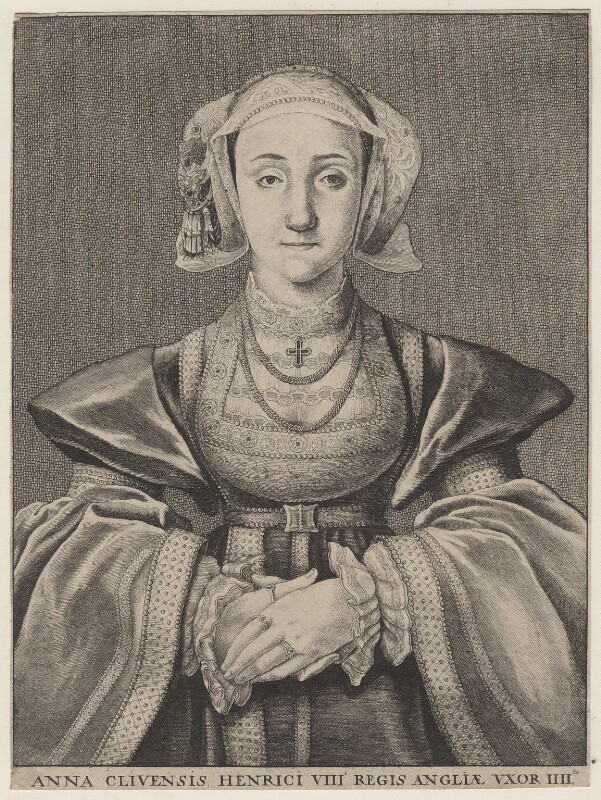Mary Queen of Scots
Mary, Queen of Scots was born in 1542, daughter of King James V of Scotland and Mary of Guise. Her father died just a week after her birth. A fervent Roman Catholic and a claimant to the English Crown Mary was a great danger to her cousin Elizabeth I. When Mary fled to England after her army was routed in 1568 she was confined by Elizabeth and was finally executed at Fotheringhay Castle on 8th February 1587.
Marriage
She was betrothed to the Dauphin of France and educated at the French Court. Her husband, who succeeded as Francis II, died within a year of his accession and Mary left France in 1560 never to return. She married secondly in 1565 Henry, Lord Darnley, son of Margaret Stewart, Countess of Lennox, in 1565 and had one son who became King James VI of Scotland and I of England. After Darnley's mysterious murder she married James, Earl of Bothwell but divorced him after a short time.
Burial
She was first buried in Peterborough Cathedral with great solemnity by Elizabeth's orders but James I ordered that her remains be brought to Westminster Abbey in 1612. His Royal Warrant was dated 28th September 1612 and the re-burial took place on 11th October. A copy of the Warrant hangs near the tomb. No detailed account of the procession which escorted the body to the Abbey has survived but it appears to have been well attended by nobles. The body was met at Clerkenwell at 6.00 pm by Richard Neile, Dean of Westminster.
The King had erected a magnificent marble tomb for her in the south aisle of the Lady Chapel on which there is a fine white marble effigy under an elaborate canopy. She wears a close-fitting coif, a laced ruff, and a long mantle fastened by a brooch. The sculptors were William and Cornelius Cure. A crowned Scottish lion stands at her feet. An ornamental railing was made by smith Thomas Bickford to surround the tomb (this was sold off in the early 19th century but returned to the Dean and Chapter in 1920). So the two queens, Mary and Elizabeth I, rest in opposite aisles in Henry VII's chapel. Next to Mary is the tomb of Margaret, Countess of Lennox on which is a kneeling figure of Lord Darnley.
Translation of the Latin inscriptions on her tomb:
To God, the best and greatest. To her good memory, and in eternal hope. MARY STUART, QUEEN OF SCOTS, Dowager Queen of France, daughter of James V of Scotland, sole heir and great granddaughter of Henry VII, King of England, through his elder daughter Margaret, (who was joined in marriage to James IV of Scotland): great-great-granddaughter of Edward IV, King of England through his eldest daughter of Elizabeth [of York]: wife of Francis II, King of France sure and certain heiress to the crown of England while she lived: mother of James, most puissant sovereign of Great Britain. She was sprung from royal and most ancient stock, linked on both paternal and maternal side with the greatest princes of Europe, abundantly endowed with most excellent gifts and adornments both of soul and body; yet, such are the manifold changes of human fortune, that, after she had been detained in custody for more or less twenty years, and had courageously and vigorously, (but vainly), fought against the obloquies of her foes, the mistrust of the faint-hearted, and the crafty devices of her mortal enemies, she was at last struck down by the axe (an unheard-of precedent, outrageous to royalty) and, despising the world, conquering death (the executioner being wearied), commending to Christ her Saviour the salvation of her soul; to James he son the hope of a kingdom and posterity, and to all who witnessed her unhappy murder an ensample of endurance, she piously, patiently and courageously submitted her royal neck to the accursed axe, and exchanged the fate of a transitory life for the eternity of an heavenly kingdom, on 8 February, year of Christ 1587, in the 46th year of her age.
If splendour of birth, if rare beauty of form, a mind innocent of vice, an unbesmirched honour, the power of an invincible spirit, a brilliance of intelligence, a hope (springing from piety) of divine consolation, if probity of character, endurance of harsh restraint, if majesty, pure goodness, and a bounteous hand: if all these were able to avoid the pallor-inducing, fulminating thunderbolts of fortune (which seek out mountains and holy places) she would not have died untimely, according to her fated destiny, nor would her effigy be made sorrowful with mourning genii [winged cherubs].
Mistress of Scotland by law, of France by marriage, of England by expectation, thus blest, by a three-fold right, with a three-fold crown; happy, ah, only too happy, had she routed the tumult of war, and, even at a late hour, won over the neighbouring forces. But she perished that she might possess the land: now she triumphs by death, that her stock might thereafter burgeon with fresh fruits. Conquered, she was unconquerable, nor could the dungeon detain her; slain, yet deathless, imprisoned, yet not a prisoner. Thus does the pruned vine groan with a greater abundance of grapes, and the cut jewel gleams with a brilliant splendour. So seeds, lying hidden through many days, gradually spring up from the fruitful earth. With blood did Jehovah ratify his covenant with his people, with blood did our fathers propitiate the divine powers; with blood were sprinkled those household gods who anger was assuaged; with blood has the land been stained which lately had yielded. Forbear, O God, it is enough: put an end to these unutterable woes. May the day of [their own] death swoop upon the death-dealers. May it be forbidden to slaughter monarchs, that henceforward the land of Britain may never more flow with purple blood. May this precedent of the violent murder of the anointed Queen come to naught; may the instigator and perpetrator rush headlong to destruction. Should she, after her own death, be vindicated by all the well-disposed, then executioners, tortures, gaols and gallows, all would cease. The Queen accomplished that journey which the heavenly powers allotted. God bestowed happy times, hard times. She gave birth, fate being propitious, to the excellent James, whom Pallas [Athena], the Muses, Diana, and the Fates revere. Great in marriage, greater still in lineage, greatest of all in her progeny, here lies buried the daughter, bride and mother of kings. God grant that her sons, and all who are descended from her, may hereafter behold the cloudless days of eternity. Mourning, I wrote this H.N [Henry, Earl of Northampton].
Christ suffered also for us, leaving us an example, that ye should follow His steps.
1.Pet[er].2.21.
Who, when He was reviled, reviled not again; when He suffered, He threatened not; but committed Himself to Him that judgeth righteously.
1.Pet.2.22 [actually verse 23]
Her burial vault was described by Arthur P. Stanley, Dean of Westminster, in the 19th century and he saw her coffin against the north wall, covered in pitch and shaped to the form of the body.
Tomb dimensions in metres: length 2.15. height 2.30
Further reading
Mary Queen of Scots by Antonia Fraser, 2004 edition
Oxford Dictionary of National Biography 2004
The Theatre of Death…royal funerals…by Jennifer Woodward, 1997
The monuments of Elizabeth Tudor and Mary Stuart: King James and the manipulation of memory by P.Sherlock in Journal of British Studies 46, April 2007
Historical Memorials of Westminster Abbey by A.P. Stanley, 1869
Exhibition "Elizabeth and Mary Royal Cousins Rival Queens" at the British Library until February 2022

© National Portrait Gallery, London [Creative Commons CC BY-NC-ND 3.0]

This image can be purchased from Westminster Abbey Library
Image © 2024 Dean and Chapter of Westminster

This image can be purchased from Westminster Abbey Library
Image © 2024 Dean and Chapter of Westminster

This image can be purchased from Westminster Abbey Library
Image © 2024 Dean and Chapter of Westminster

This image can be purchased from Westminster Abbey Library
Image © 2024 Dean and Chapter of Westminster

This image can be purchased from Westminster Abbey Library
Image © 2024 Dean and Chapter of Westminster










